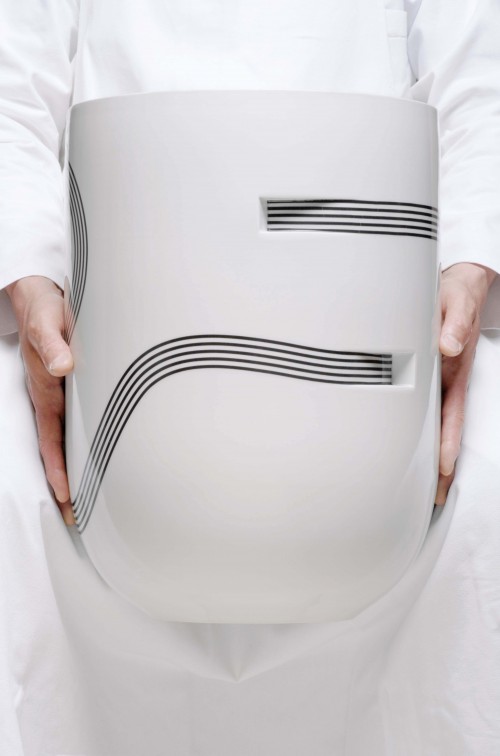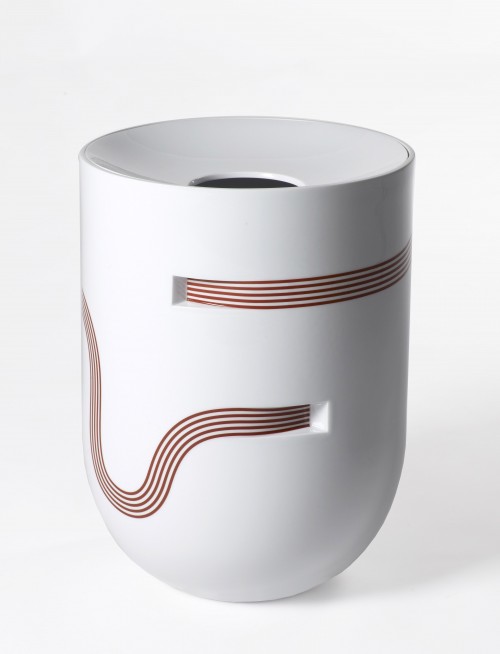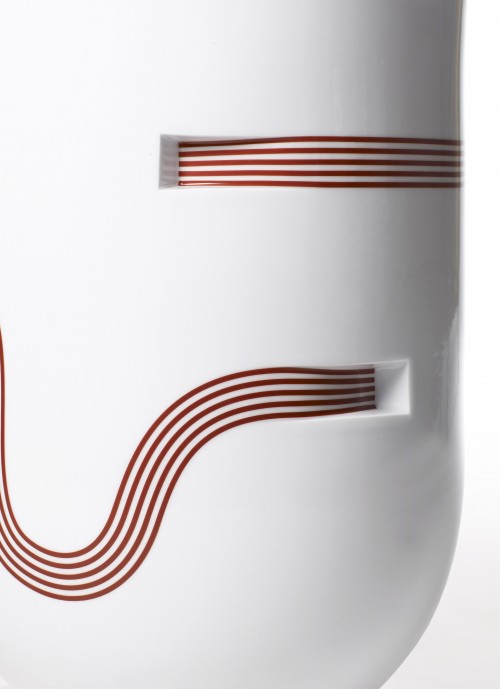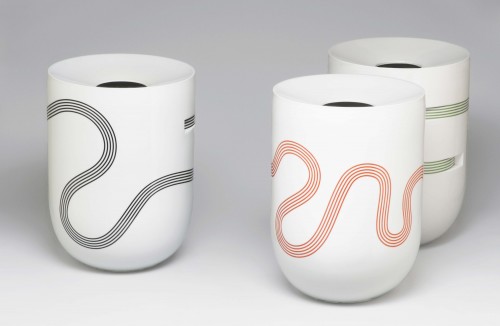Along with the new shapes, I submitted another design to the Manufactory, for a vase, produced as a limited edition, co-launched by the Sevres National Manufactory and the Kreo Gallery.
The Ruban vase is 46cm tall and 32cm in diameter. Needless to say it is quite imposing. But the fact that is imposing is not in itself what is interesting. It’s far better not to play that game with the Sevres National Manufactory, as the two enormous Chinese-inspired vases that confront you when you get inside its doors quickly dissuade you from that course. Perhaps they were even made and put there to discourage anyone who might have the intention of venturing down that route and trying to acquire the technical prowess it entails. They seem to serve to set the standard of what is possible, of what has already been achieved, and of what is no longer left to be made.
The Ruban vase is not a monumental piece. It can easily be held in one’s arms.
Its design is distinct from the shapes designed for the back catalogue of the Manufactory by an even greater simplicity of form and by the presence of two rectangular indentations, situated in an offset position on the same side of the cylinder.
It is from these indentations that a set of rather sinuous lines move out over the surface of the vase, plotting a path of varying complexity, depending on which of the three versions you are looking at. A set of undulating lines, dancing between two set points.
As a result of the indentations, the lines slide over the surface of the vase, only to disappear inside. Once they have been lost from sight, they escape to follow their path to infinity. From a single unit, we are brought face to face with an infinite number.
Pierre Charpin, 2008
Parallèlement aux nouvelles formes, j’ai soumis à la Manufacture un autre dessin, de vase, produit en série limitée, co-édité par la Manufacture Nationale de Sèvres et la Galerie Kreo.
Le vase Ruban mesure 46cm de haut pour un diamètre de 32cm. Autant dire qu’il est plutôt imposant. L’imposant, en soi, ce n’est pas intéressant. D’ailleurs mieux vaut ne pas jouer à ce jeu à la Manufacture Nationale de Sèvres, car les deux immenses vases d’inspiration chinoise auxquels on est confronté dès que l’on pénètre dans son enceinte vous en dissuadent fortement. Peut-être même ont-ils été réalisés et posés là pour décourager quiconque aurait l’intention de s’aventurer sur le terrain de la démesure et des prouesses techniques qui en découlent. Ils semblent faire office d’étalon dans l’échelle des possibles, du déjà fait, de ce qui n’est plus à faire.
Le vase Ruban n’est pas monumental. On le tient aisément dans ses bras.
Son dessin se distingue par une encore plus grande simplicité de la forme et par la présence de deux encoches rectangulaires, situées de manière décalée sur la même face du cylindre.
C’est à partir de ces encoches que se déploie sur la superficie du vase un jeu de lignes plus ou moins sinueuses, de trajectoires plus ou moins tortueuses, suivant les trois modèles proposés. Un jeu de lignes ondulantes, dansantes entre deux points prédéterminés.
Par ces encoches, les lignes glissent sur la surface du vase, pour fuir vers l’intérieur du volume. Alors soustraites à notre regard, elles nous échappent pour accéder à leur infinité. D’une unité, nous voici confrontés à une infinité.
Pierre Charpin, 2008







